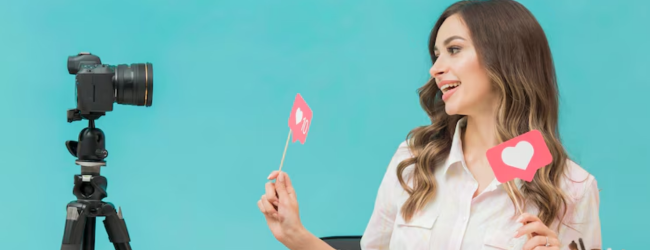Table of contents
- Why Advertise on Instagram?
- Getting Started: Prerequisites
- How to Run Ads on Instagram: Two Main Methods
- Method 1: Running Ads Directly from the Instagram App (Boosting)
- Method 2: Running Ads Using Facebook Ads Manager (Recommended)
- Tips for Effective Instagram Ads
- Real Business Examples (India – Illustrative)
- Conclusion
- Frequently Asked Questions (FAQs)
Instagram isn’t just for sharing pretty pictures anymore. With over 2 billion monthly active users globally and a significant chunk of those in India (estimated over 350 million users!), It’s a powerhouse for businesses looking to connect with their target audience. If you’re wondering how to run ads on Instagram effectively, you’ve come to the right place.
Running ads on Instagram allows you to reach potential customers, drive traffic to your website, increase brand awareness, generate leads, and ultimately boost sales. But navigating the world of Instagram advertising can seem daunting at first. This guide will break down the process step by step, making it simple and actionable for businesses of all sizes, including those operating in India.
Why Advertise on Instagram?
Before diving into the ‘how,’ let’s quickly understand the ‘why’.
- Massive & Engaged Audience: Reach a vast number of potential customers who actively engage with content. Instagram users in India, for instance, spend a significant amount of time on the platform daily.
- Powerful Targeting Options: Leverage Facebook’s robust advertising platform to target users based on demographics (age, location, gender), interests (hobbies, pages liked), behaviours (purchase habits, device usage), and even create custom audiences (people who’ve interacted with your business) or lookalike audiences (people similar to your existing customers).
- Visual Storytelling: Instagram is a visual platform, perfect for showcasing products or services in an appealing way through images, videos, Stories, and Reels.
- Seamless Integration: Ads blend naturally into users’ feeds and Stories, leading to higher engagement compared to traditional disruptive ads.
- Measurable Results: Track key metrics to understand ad performance and optimize campaigns for better return on investment (ROI).
Getting Started: Prerequisites

Before you can run ads, ensure you have the following:
- An Instagram Business Account or Creator Account: Personal accounts cannot run ads. Converting is free and easy within the app’s settings. This gives you access to insights and the ability to promote posts.
- A Facebook Business Page: Instagram ads are managed through Facebook’s advertising platform. You’ll need to link your Instagram account to a Facebook Page. (Don’t worry, your ads can still run only on Instagram if you choose).
How to Run Ads on Instagram: Two Main Methods
There are two primary ways to create and run Instagram ads:
- Directly from the Instagram App (Promoting Posts): This is the simpler method, ideal for beginners or quickly boosting the reach of an existing high-performing post.
- Using Facebook Ads Manager: This is the more powerful and recommended method, offering comprehensive features for campaign creation, targeting, optimization, and reporting.
Let’s break down each method:
Method 1: Running Ads Directly from the Instagram App (Boosting)
This method involves “boosting” or “promoting” a post you’ve already shared on your Instagram profile.
- Step 1: Choose a Post to Promote: Go to your Instagram profile, select a post you want to advertise (ideally one that has already performed well organically), and tap the “Boost Post” button below it. Note: You must have a Business or Creator account.
- Step 2: Select Your Goal: Instagram will ask what results you’d like from this ad. Common goals include:
- More Profile Visits: Drive traffic to your Instagram profile.
- More Website Visits: Send users to your website (you’ll add a URL and choose an action button like “Learn More” or “Shop Now”).
- More Messages: Encourage users to send you a message via Instagram Direct.
- Step 3: Define Your Audience: You can let Instagram automatically target people similar to your followers, or you can “Create Your Own” audience. Creating your own allows you to specify:
- Location: Target specific cities, regions, or countries (e.g., Mumbai, Karnataka, India).
- Interests: Target based on topics users have shown interest in (e.g., “Fashion,” “Technology,” “Indian Cuisine”).
- Age & Gender: Define the age range and gender of your target audience.
- Step 4: Set Your Budget & Duration: Decide how much you want to spend per day (your Budget) and how long you want the ad to run (the Duration). Instagram will estimate the potential reach based on your settings.
- Step 5: Review and Boost: Check all your settings (Goal, Audience, Budget, Duration). You’ll see a summary and the total estimated spend. Add your payment method if you haven’t already. Tap “Boost Post”. Your ad will be submitted for review (usually takes a few minutes to 24 hours) before it starts running.
Highlight: Boosting posts directly from the app is quick and easy for beginners but offers limited targeting and optimization options compared to Ads Manager.
💡 Pro Tip: If you want to start an online business but have too many doubts, connect with a online business expert from Boss Wallah for guidance – https://bw1.in/1116
Method 2: Running Ads Using Facebook Ads Manager (Recommended)

Facebook Ads Manager is the central hub for creating and managing ads across Facebook, Instagram, Messenger, and the Audience Network. It provides much more control and advanced features.
- Step 1: Access Ads Manager: Go to business.facebook.com/adsmanager or navigate through your linked Facebook Page. Ensure your Instagram account is linked (Settings > Instagram Connection).
- Step 2: Create a New Campaign: Click the green “+ Create” button.
- Step 3: Choose Your Campaign Objective: This is crucial as it tells Facebook/Instagram what you want to achieve. Objectives are grouped into categories:
- Awareness: Increase brand recognition or reach (e.g., Brand Awareness, Reach).
- Consideration: Get people to think about your business and seek more info (e.g., Traffic (to website/app), Engagement (post likes, comments, shares), App Installs, Video Views, Lead Generation, Messages).
- Conversion: Encourage people to take a specific action (e.g., Sales (online purchases), Catalogue Sales, Store Traffic).
- Choose the objective that best aligns with your business goal. For example, an e-commerce store like Myntra might use “Sales,” while a local restaurant in Bangalore might use “Store Traffic” or “Engagement.”
- Step 4: Name Your Campaign, Ad Set, and Ad: Give them clear, descriptive names for easy tracking.
- Step 5: Define Your Audience (Ad Set Level): This is where the power lies. You can define:
- Location: Target countries, states, cities, postal codes, or even a radius around a specific address.
- Age, Gender, Languages.
- Detailed Targeting: Include or exclude people based on:
- Demographics: Education, life events, work, etc.
- Interests: Hobbies, liked pages, activities (e.g., target users interested in “Bollywood Movies” or “Cricket”).
- Behaviours: Purchase behaviour, device usage, travel habits, etc.
- Custom Audiences: Target people who have already interacted with your business (website visitors, app users, customer lists, people who engaged with your Instagram/Facebook).
- Lookalike Audiences: Find new people who are similar to your existing best customers or followers.
- Step 6: Choose Ad Placements (Ad Set Level): Decide where your ads will appear.
- Automatic Placements (Recommended for beginners): Facebook’s system will automatically show your ads across Facebook, Instagram, Messenger, and Audience Network where they are likely to perform best.
- Manual Placements: You can manually select where your ads appear. To run ads only on Instagram, deselect all other platforms (Facebook, Audience Network, Messenger) and choose specific Instagram placements:
- Feed: Ads appear in the main scrolling feed.
- Stories: Full-screen vertical ads between user Stories.
- Reels: Vertical video ads shown between Reels.
- Explore: Ads appear in the Explore tab where users discover new content.
- Shop: Ads within the Instagram Shop tab.
- Think about where your target audience spends their time. Stories and Reels are highly engaging formats, especially popular among younger demographics in India.
- Step 7: Set Budget & Schedule (Ad Set Level):
- Budget: Choose either a Daily Budget (average amount spent per day) or a Lifetime Budget (total amount spent over the campaign duration). Start with a small budget (e.g., ₹200-₹500 per day) to test and learn.
- Schedule: Set a start and end date for your campaign, or let it run continuously. You can also schedule ads to run only during specific times or days (ad scheduling).
- Step 8: Create Your Ad (Ad Level):
- Identity: Ensure your correct Instagram account (and linked Facebook Page) is selected.
- Ad Format: Choose the type of ad you want to run:
- Single Image: A simple, clean ad with one image.
- Single Video: Engage users with sight, sound, and motion. Short-form video (like Reels ads) is very effective.
- Carousel: Showcase multiple images or videos (up to 10) in a single ad, each with its own link. Great for showing different products or features.
- Collection: A mobile-only format that pairs a primary video or image with four smaller product images below it. Tapping opens a full-screen Instant Experience. Ideal for e-commerce.
- Stories Ads: Full-screen vertical images or videos designed for Instagram Stories.
- Reels Ads: Full-screen vertical videos appearing between organic Reels.
- Ad Creative: Upload your image(s) or video(s). Follow Instagram’s ad specifications for best results.
- Ad Copy: Write compelling text (Primary Text), an optional attention-grabbing Headline, and a clear Call to Action (CTA) button (e.g., “Shop Now,” “Learn More,” “Sign Up,” “Contact Us,” “Visit Instagram Profile”). Keep your copy concise and benefit-focused.
- Destination: Add the URL where you want to send people who click your ad (website, landing page, app store). Ensure your landing page is mobile-friendly and relevant to the ad.
- Tracking: Set up tracking (like the Meta Pixel) to measure conversions on your website.
- Step 9: Review and Publish: Double-check everything – objective, audience, placements, budget, schedule, ad creative, links. Once satisfied, click “Publish”. Your campaign will go into review.
Highlight: Facebook Ads Manager offers granular control over targeting, placements, bidding, and creative options, leading to potentially more effective and optimized campaigns.
ALSO READ | What is YouTube Income per 1000 Views? YouTube Monetization & Earnings Explained
Tips for Effective Instagram Ads

Knowing how to run ads on Instagram is just the start. Here’s how to make them work harder for you:
- Use High-Quality Visuals: Instagram is visual. Use clear, eye-catching images or videos that grab attention instantly. Avoid blurry or cluttered visuals. User-generated content can also perform well.
- Write Compelling Copy & CTAs: Keep your text concise, highlight benefits, and use a clear Call to Action that tells users exactly what you want them to do. Use emojis sparingly to add personality.
- Know Your Audience: The better you define your target audience, the more relevant your ads will be, leading to better results and less wasted ad spend.
- Test, Test, Test (A/B Testing): Don’t assume you know what works best. Experiment with different:
- Ad Creatives (images vs. videos, different visuals)
- Ad Copy (headlines, primary text, CTAs)
- Audiences (different interest groups, demographics, custom/lookalike audiences)
- Placements (Feed vs. Stories vs. Reels)
- Run small tests, analyze the results in Ads Manager, and scale what works.
- Optimize for Mobile: Most users access Instagram on mobile devices. Ensure your ads and landing pages look great and load quickly on smartphones. Use vertical formats for Stories and Reels.
- Monitor Performance & Optimize: Regularly check your Ads Manager dashboard. Key metrics to watch include:
- Reach: Number of unique people who saw your ad.
- Impressions: Total number of times your ad was shown.
- Click-Through Rate (CTR): Percentage of impressions that resulted in a click. A higher CTR generally indicates a relevant ad.
- Cost Per Click (CPC): How much you pay on average for each click.
- Cost Per Result: How much you pay for achieving your campaign objective (e.g., Cost Per Lead, Cost Per Purchase).
- Frequency: Average number of times each person saw your ad. High frequency can lead to ad fatigue.
- Use these insights to pause underperforming ads, adjust budgets, refine targeting, or tweak creatives.
- Ensure Landing Page Relevance: The page users land on after clicking your ad should be directly related to the ad content and offer a seamless experience.
- Understand Ad Costs: Instagram ad costs vary based on factors like your target audience, placement, objective, bidding strategy, ad quality, and competition. Costs in India can range from a few rupees per click/result to much higher amounts depending on these variables. Start small, monitor results, and adjust your budget accordingly.
Real Business Examples (India – Illustrative)

- Local Boutique (e.g., in Delhi): Could use “Traffic” objective ads targeting women aged 25-45 within Delhi, interested in “Fashion,” “Boutiques,” and “Kurtis.” They might use Carousel ads showcasing their latest collection in the Instagram Feed and Stories placements.
- Tech Startup (e.g., in Bangalore): Might use “Lead Generation” objective ads targeting tech professionals in major Indian cities, interested in “SaaS,” “Startups,” and specific software categories. They could use single video ads explaining their product’s value proposition.
- Restaurant (e.g., in Chennai): Could use “Engagement” or “Store Traffic” objective ads targeting people within a 5km radius, interested in “Food,” “Dining Out,” and specific cuisines (e.g., “South Indian Food”). They might promote posts featuring delicious food photos or run Stories ads with limited-time offers.
ALSO READ | How to Get 1k Followers on Instagram in 5 Minutes? Easy Hacks & Tips
Need Expert Guidance?
Starting a business can be challenging, but you don’t have to do it alone! At Boss Wallah, our 2,000+ business experts are ready to provide valuable insights and guidance. Whether you need help with marketing, finance, sourcing, or any other area of any business, our business experts are here to help you succeed- https://bw1.in/1116
Confused about Which Business to Start?
Want to start your own business but unsure which one to choose? Explore Boss Wallah, where you’ll find 500+ courses by successful business owners, featuring practical, step-by-step guides on starting and growing various businesses.
Find your perfect business idea today – https://bw1.in/1111
Conclusion
Learning how to run ads on Instagram opens up a significant opportunity to grow your business in today’s digital landscape, especially within the vibrant Indian market. While boosting posts directly from the app offers simplicity, mastering Facebook Ads Manager unlocks the platform’s full potential for precise targeting, diverse ad formats, and robust optimization.
Start with clear goals, understand your audience deeply, create compelling visuals and copy, and commit to testing and monitoring your results. Don’t be afraid to start small, learn from the data, and gradually scale your efforts. With a strategic approach, Instagram advertising can become a powerful engine for achieving your business objectives.
Frequently Asked Questions (FAQs)
How much does it cost to run ads on Instagram in India?
Costs vary widely based on your objective, targeting, placement, ad quality, and competition. You control your budget (daily or lifetime). You can start with as little as ₹80-₹100 per day, but ₹300-₹500+ per day is more common for initial testing. Costs are often measured per click (CPC) or per thousand impressions (CPM), or per desired result (e.g., cost per lead). Expect costs to fluctuate.
Do I need a Facebook page to run Instagram ads?
Yes, you need to link your Instagram Business or Creator account to a Facebook Business Page to run ads, primarily because ad management happens through Facebook’s Ads Manager platform.
Can I run ads only on Instagram and not on Facebook?
Absolutely. When setting up your campaign in Ads Manager, go to the “Placements” section, select “Manual Placements,” and deselect all platforms except Instagram. You can even choose specific Instagram placements like Feed, Stories, Reels, or Explore.
What’s better: Boosting posts or using Ads Manager?
Boosting is simpler and quicker for promoting existing posts to a broader audience. Ads Manager offers far more control over objectives, targeting, creative formats, placements, bidding, and detailed analytics. For serious advertising and optimization, Ads Manager is highly recommended.
What kind of content works best for Instagram ads?
High-quality visuals (clear images, engaging videos) are crucial. Short-form video (especially for Reels and Stories) is very popular. User-generated content, behind-the-scenes glimpses, tutorials, and special offers also tend to perform well. Always tailor content to the specific placement (e.g., vertical for Stories/Reels).
How long does it take for an Instagram ad to be approved?
Most ads are reviewed within 24 hours, although it can often be much faster (sometimes just minutes). Occasionally, it might take longer. Ensure your ad complies with Meta’s Advertising Policies to avoid rejection.
How do I target specific locations in India for my ads?
In the Audience section of Ads Manager (at the Ad Set level), you can target by country (India), state (e.g., Maharashtra, Tamil Nadu), city (e.g., Hyderabad, Kolkata), postal codes, or even set a radius around a specific address (useful for local businesses).
How do I measure the success of my Instagram ad campaign?
Define clear goals first. Then, use Facebook Ads Manager to track key metrics relevant to your objective. For awareness, look at Reach and Impressions. For traffic, monitor CTR and Landing Page Views. For conversions, track Leads or Purchases and the Cost Per Result. Analyze this data regularly to understand what’s working and optimize your campaigns.


